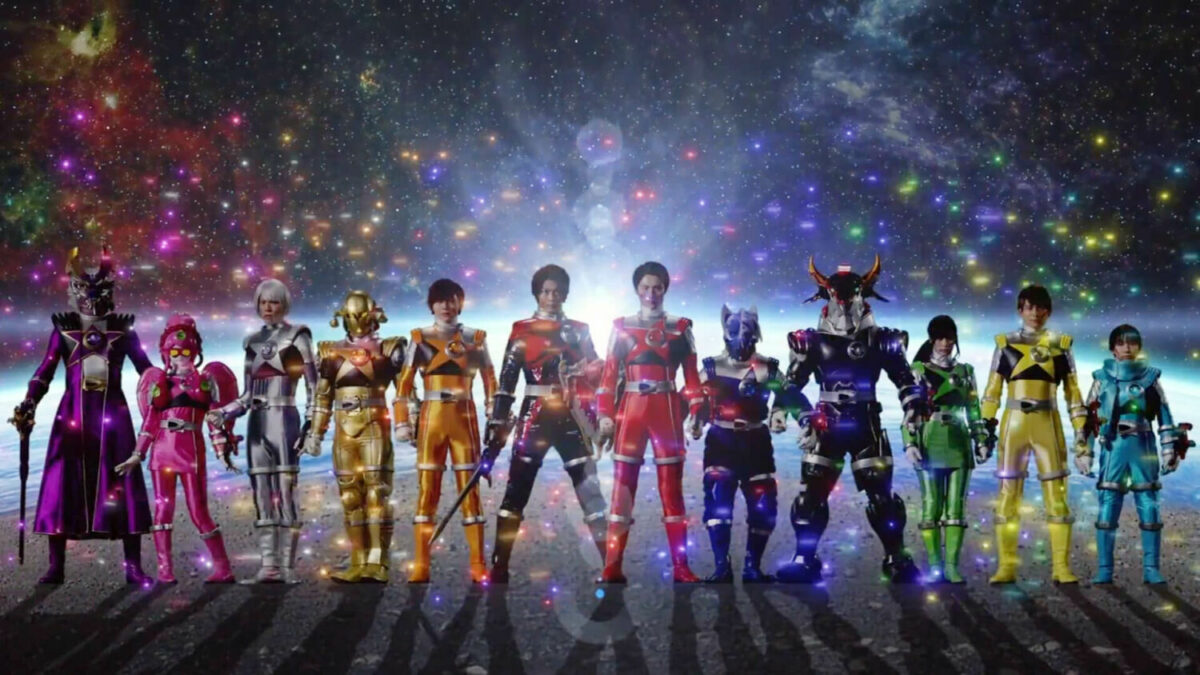The recent release of Mighty Morphin Power Rangers: Once & Always on Netflix commemorates the 30th anniversary of the franchise, leaning heavily into nostalgia in lieu of elaborate storytelling and superb performances. However, the truth is, if you’re looking to recapture your Power Rangers kick, you might be better off checking out the original Japanese franchise it spawned from — Super Sentai.
The history of Super Sentai
The long-running franchise originated in Japan in 1975 with the series Himitsu Sentai Gorenger. Known for its colourful team of heroes, giant robots, and over-the-top action, it has since entertained generations of fans for over 40 years.
Each series, or “season”, features a brand-new team of heroes — often with unique costumes, distinct personalities and skillsets — who fight against evil organisations trying to take over the world. The heroes transform into their colour-coded suits and wield weapons and gadgets to battle their foes. When the monsters become too powerful, the heroes summon their giant robots to fight on an even larger scale.
Super Sentai gained a following outside of Japan through its American counterpart, Power Rangers, which adapts footage from Super Sentai by dubbing over the dialogue and filming new scenes with predominantly American actors, that when combined with the costumed action sequences, produce a new show.
This began in 1993 with Mighty Morphin Power Rangers, which adapted from the 1992 Japanese series Kyōryū Sentai Zyuranger. Subsequent Power Rangers shows then take from other Super Sentai series and so on but that said, Power Rangers is mostly a different experience from Super Sentai, as the American writers change storylines and characters, to fit a more kid friendly audience. Even when it attempts to stick closely to the source material, like Power Rangers Samurai or Power Rangers Time Force, the execution ends up feeling different.
Overall, Super Sentai is a unique and entertaining franchise that offers something for everyone. Its colourful heroes and mecha battles appeal to children, while its complex storylines and character development can appeal to older audiences. The series is also known for its strong messages of teamwork and friendship, making it a positive and uplifting experience.
Mixing up the formula
The Super Sentai franchise hit a bit of a slump in the mid-2010s, with lower viewership and declining toy sales. This has led to Toei, the multimedia company behind Super Sentai, attempting to make changes to the well-worn formula to try and save the franchise.
For example, Uchū Sentai Kyuranger in 2017 had the largest Sentai team to date, with a whopping total of 12 rangers in the show. The massive team would often break up into smaller groups that would go off on their own riveting missions.
Its 2018 follow-up, Kaitou Sentai Lupinranger VS Keisatsu Sentai Patranger, broke the formula further. It featured two separate Sentai teams at odds with one another, set to the theme of phantom thieves and cops.
These are qualities that you won’t really find in Power Rangers. While the upcoming season of Power Rangers — Power Rangers Cosmic Fury — will adapt certain elements from Kyuranger, current Power Rangers showrunner Simon Bennett has claimed that we will never see a proper adaptation of Kyuranger or Lupinranger VS Patranger. He cites that the former has “Too many Rangers” while the latter is “problematic” due to the controversial nature of cops and the fact that “Rangers can’t be criminals”.
In recent years, Super Sentai has also experimented with the formula in other ways. 2021’s Kikai Sentai Zenkaiger stands out as the season where the core team consists of a single human and four robots. The robots had no human identities in the main series, and were therefore played by stuntpeople in suits while being voiced by notable voice actors (for example, the Yellow Ranger was portrayed by Yūki Kaji, who also voices Eren Yeager in Attack on Titan and Shōto Todoroki in My Hero Academia).
Meanwhile, Avataro Sentai Donbrothers saw the franchise’s first male pink ranger in 2022. This beloved series had a huge focus on character-driven storytelling, and made more extensive use of CGI than past productions. Donbrothers also helped to reinvigorate the franchise’s toy sales through improvements to its mecha design. Don Onitaijin, the main mecha of the series, featured greater joint articulation and more dynamic movement than its predecessors. Its toy equivalent even went on to win the Grand Prize at the 2022 Japan Toy Awards.
It’s the perfect time to get into Super Sentai
For the most part, each new season of Super Sentai is its own self-contained series. So, audiences can choose to jump into any new season and enjoy what it has to offer.
The latest entry in the Super Sentai franchise, Ohsama Sentai King-Ohger, is still in its early days, having premiered on 5 March 2023. This makes it a good place to start and catch up with the show. What’s more, King-Ohger refines the franchise’s use of CGI and combines it with highly dynamic action sequences, making it possibly one of the most stylistic seasons yet.
While Power Rangers trades in nostalgia, Super Sentai is often ready to pounce on popular trends and incorporate them into its series. Keen-eyed viewers of King-Ohger might be able to spot shades of Attack on Titan and Game of Thrones that inspire the show.
As such, fans of Power Rangers who are looking for something more from their costumed superheroes can check out Super Sentai. It offers a unique and entertaining experience that is sure to capture the hearts of viewers of all ages.
The North American distributor of Super Sentai, Shout! Factory, offers boxsets of older Super Sentai (as well as Power Rangers) series. Otherwise, interested viewers can check out episodes of Super Sentai on Toei’s YouTube channel through the help of a VPN, or resort to sailing the high seas.



















